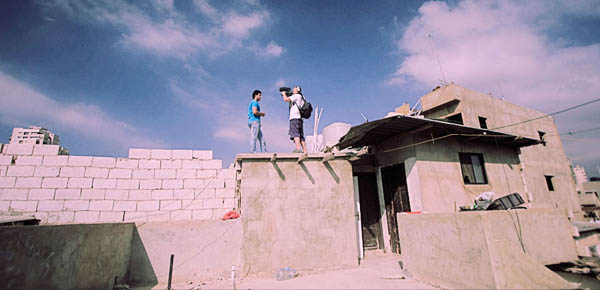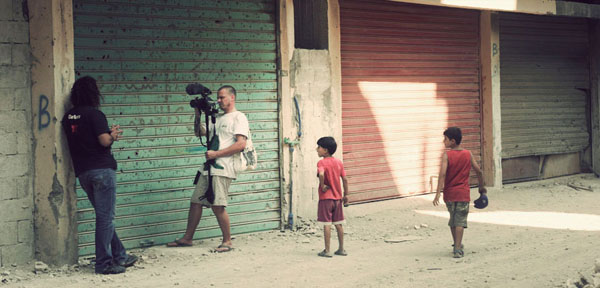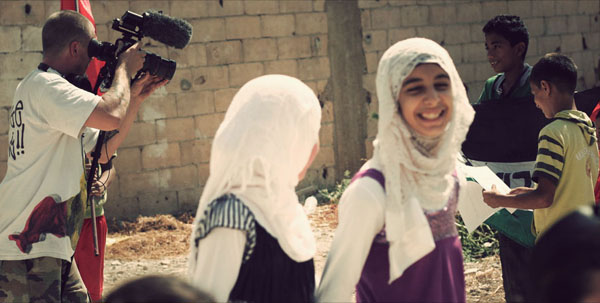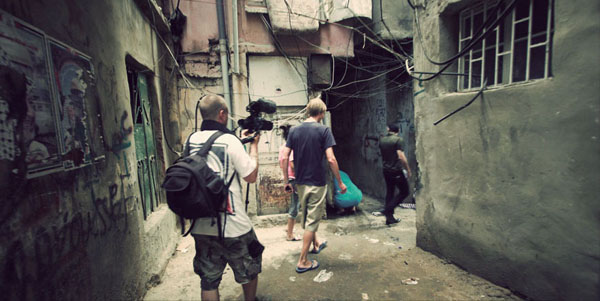Turntables in the camps from simon weyhe on Vimeo.
I recently spent twelve days in Lebanon and it was an adventure and an experience I will never forget; I saw another side of the world. I was traveling with Simon Lebon and Martin Fernando from Den Sorte Skole and Rita and Lei from Ladybox, who came to do DJ workshops for the Palestinian refugees living in camps. About 425,000 refugees are registered in Lebanon, but because they are not formally citizens of another state, they are not able to claim the same rights as other foreigners living and working there.

Turntables in the Camps was set up to spread the means for musical creativity, break down boundaries and to create a window to the world for marginalized refugee youth. It conducts workshops and sets up permanent local DJ schools for refugee boys and girls in order to show that everybody can be a DJ or an MC.
It was hard to plan much from home because of the language issue and all of the restrictions there are with filming in Lebanon and especially in the camps. So I had to go there and take it one day at the time – definitely not the optimal way to go about making a documentary.


I knew that I had to pack light and leave a lot of the equipment in Denmark, because there would be situations where we had to smuggle gear into the camps and then stay as low key as possible once inside. I took:
– Canon 7D and Canon 550D (Canon T2i)
– GoPro HD camera
– Fader ND Filter (a great tool for those sunny days; don’t leave home without it)
– Two lenses, a Canon 16-35mm f2.8 and the Canon 24-70mm f2.8 – both work great for run and gun shooting
– Two time-lapse controllers
– Zacuto Z-finder, I find it pretty much impossible to film without this one.
– Sennheiser wireless mic. The system works perfectly with the Zoom H4n
– Manfrotto tripod with a ball head, mainly for time-lapse
– Small slider dolly
– Manfrotto light weight monopod (I always use the monopod for running and gunning as it’s fast and gives you many options for getting a steady shot. I use an elastic belt with a pocket to hold the monopod as this way you can get steady shots when standing still, even with a 70-200mm lens.)
There was a lot of run and gun shooting and I was always keeping an eye out for the military, because there is one thing you don’t want to get caught doing and that is filming the military, especially in the camps. On top of all that there is stuff going on, that you don’t talk about and most definitely don’t film either. So all in all, you need to think before you pull the camera out of the bag… it was a learning process in filming in tight and tense areas and always having one eye open to spot problems before they happen.

Editing the movie was done in Final Cut Pro. I used the 3 way color corrector, to get my look, exposure and so on and then I used Magic Bullet Looks to give them a final touch.
I met a lot of really open and friendly people and I was invited in with open arms wherever I went. It was a heavy reality call for me: these people don’t have anything, they can’t work, own a place to stay or move freely. Most of them don’t have a future, if they don’t leave; then again would you want to run away and leave your whole family behind, not knowing if you would end up in jail in another country? But they still have their dignity and an open heart. It was a very positive experience to see that even though everything seems like you are at the end of the road, you can still be friendly, positive and spread good karma…
For more info visit: http://www.turntablesinthecamps.org/
About Simon Weyhe:
You can see more video from Simon on Vimeo.
And find our more about Simon’s work here.






